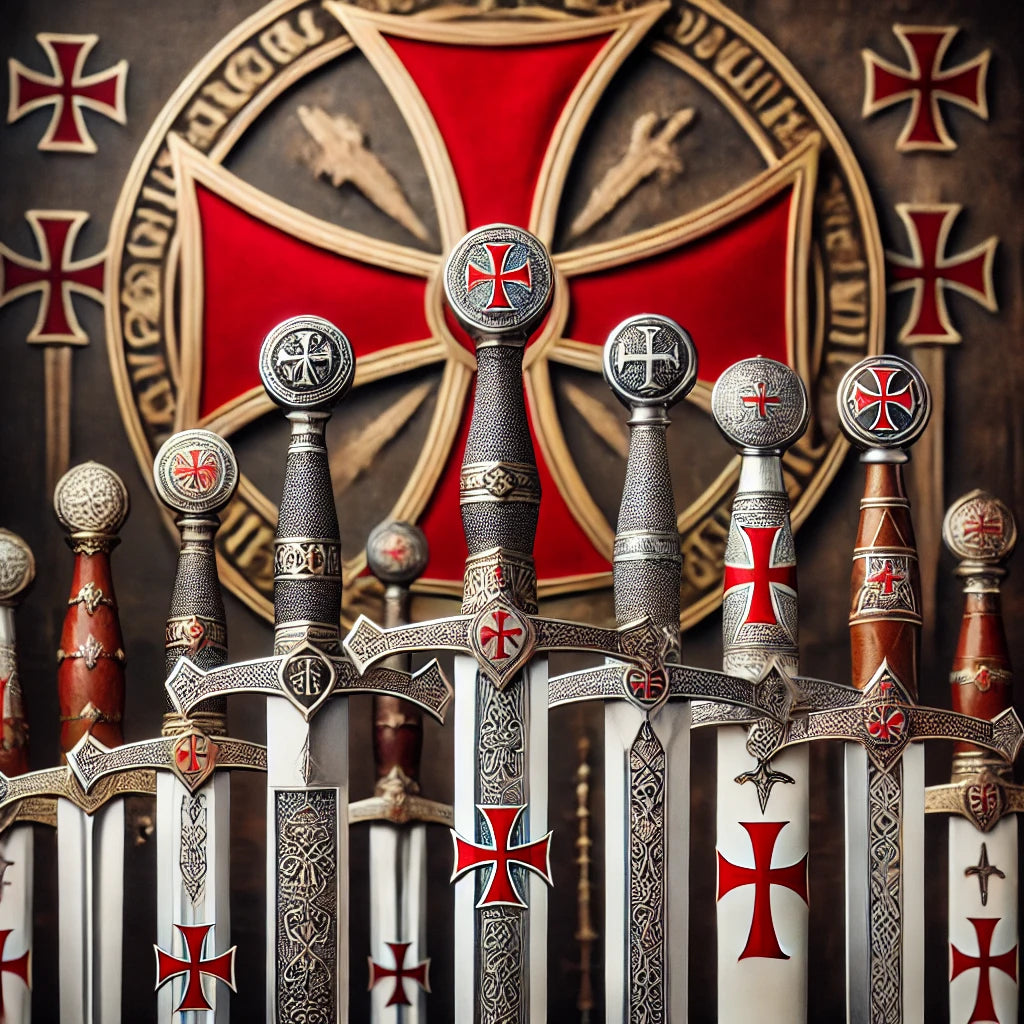The Red Cross: A Symbol of Sacrifice and Service Through History
The Red Cross is a universally recognized symbol of humanitarian aid and medical assistance. However, its origins are deeply rooted in medieval history, particularly with the Knights Templar. This article delves into the rich history of the Red Cross, tracing its journey from a symbol of sacrifice in the Crusades to its modern role in international humanitarian efforts.
Origins of the Red Cross
The Knights Templar and the Red CrossThe Knights Templar, a medieval Christian military order founded in 1119, were among the first to adopt the Red Cross as their emblem. Granted by Pope Eugenius III in 1147, the Red Cross symbolized the Templars' willingness to become martyrs for their faith, representing their dedication to defending Christianity during the Crusades.
Symbolism and Meaning
For the Templars, the Red Cross was more than just a religious emblem; it was a mark of honor and sacrifice. The cross signified the Templars' commitment to their cause and their readiness to lay down their lives in service to God. It was prominently displayed on their white mantles, making them easily recognizable.

The Evolution of the Red Cross Symbol
From Medieval Battles to Modern Humanitarianism
While the Knights Templar dissolved in the early 14th century, the symbol of the Red Cross endured, eventually becoming associated with humanitarian aid and medical assistance. The modern Red Cross movement was founded in the mid-19th century, inspired by the same principles of sacrifice and service.
The Creation of the International Red Cross
In 1863, Swiss businessman Henry Dunant founded the International Committee of the Red Cross (ICRC) after witnessing the horrors of the Battle of Solferino. Dunant proposed a neutral organization to provide care for wounded soldiers, regardless of their nationality. The Red Cross symbol was chosen for its simplicity and visibility, and it has since become synonymous with impartial medical aid.
The Red Cross in Modern Humanitarian Efforts
The International Red Cross and Red Crescent Movement
Today, the Red Cross and Red Crescent Movement is a global network of humanitarian organizations dedicated to providing emergency assistance, disaster relief, and education. The movement operates in nearly every country, guided by principles of neutrality, impartiality, and humanity.
Key Humanitarian Initiatives
The Red Cross symbol is used by various organizations within the movement, including the International Federation of Red Cross and Red Crescent Societies (IFRC) and national Red Cross and Red Crescent societies. These organizations conduct a wide range of activities, from disaster response and healthcare services to community education and advocacy for international humanitarian law.
Support the Cause: Learn how you can donate to the Red Cross and support their vital humanitarian efforts.
The Legal Protection of the Red Cross Symbol
International Humanitarian Law
The Red Cross emblem is protected under international humanitarian law, specifically the Geneva Conventions. It is used to identify medical personnel, facilities, and transportation in conflict zones, ensuring they are respected and protected from attack.
Misuse and Respect
The misuse of the Red Cross symbol is prohibited to maintain its neutrality and protect its integrity. This ensures that the emblem remains a trusted sign of humanitarian aid and medical assistance in times of war and disaster.
The Enduring Legacy of the Red Cross
A Global Symbol of Hope
The Red Cross has evolved from its origins with the Knights Templar into a global emblem of hope, compassion, and humanitarian aid. Its history is a testament to the enduring values of sacrifice and service that continue to inspire people worldwide.
Educational and Historical Impact
The history of the Red Cross symbol offers valuable lessons in resilience, compassion, and the importance of humanitarian principles. By understanding its origins and evolution, we gain a deeper appreciation for the efforts of those who work tirelessly to alleviate suffering and provide aid to those in need.

Conclusion
The Red Cross is a powerful symbol that has transcended its medieval origins to become a beacon of hope and humanitarianism worldwide. From the Knights Templar to the modern Red Cross movement, this emblem represents the timeless values of sacrifice, service, and compassion.
Dive deeper into the rich history and enduring impact of the Red Cross symbol. Subscribe to our newsletter for exclusive insights and updates. Visit our Masonic Store to explore Red Cross-inspired products and bring a piece of history into your life.



